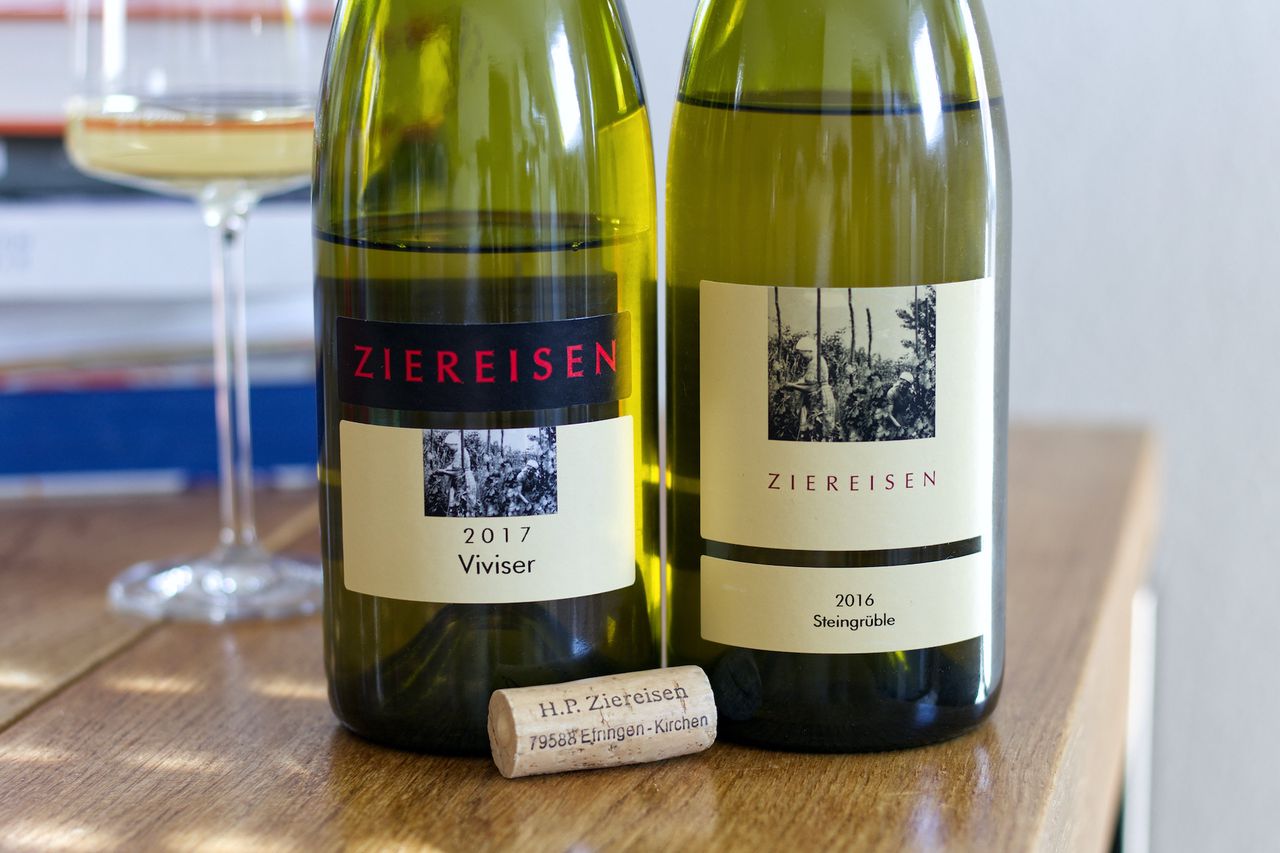Two Gutedel by Ziereisen
We drink two bottles of Gutedel from the Ziereisen winery in Baden: a Viviser from 2017 and a Steingrüble from 2016.

After we have already had two wines from the Ziereisen winery, a very important part of the collection is still missing. I know of no other winery that makes Gutedel in such depth from entry level wine to top wine. From the entry-level Heugumber to the Jaspis 10hoch4, and thus from well under 10 to over 100 euros, wines are offered in the winery range. At the same time, Gutedel actually does not have a particularly good reputation and is not really widespread. The Markgräflerland in Baden stands far and lonely at the top of the cultivation areas with over 1000 hectares of vineyards. Saale-Unstrut, in second place, with just over 20 hectares, looks pretty beaten. This is quite reminiscent of the Trollinger in neighboring Württemberg. We’re not drinking at the top of the Ziereisen Gutedel pyramid today, nor are we drinking at the very base, nor is the Underground, vinified in amphorae as Orange, in the glass. Instead, we open a bottle of Viviser from 2017 and a bottle of Steingrüble from 2016. Viviser is an old name for the Gutedel. The wine is fermented in large wooden barrels after hand harvesting and then ages on its lees for 20 months. It is completely dry with 0.5 grams of residual sugar, yet is pleasingly light in alcohol at only 11.5 percent. The Steingrüble, now called Steinkrügle in recent vintages, was also fermented spontaneously in large wood after hand harvesting and then allowed to age on the lees for 22 months. It has only minimally more residual sugar with 1.9 grams and 12% alcohol. The vines grow on Jurassic limestone, were we just recently noticed how rare that is in Germany. Both wines are filled unfiltered and, like all wines from Ziereisen, declared as Landwein.
We start with the Viviser. This is under screw cap, which I, because I only half looked and even less thought along, first maltreated with the capsule cutting device. Things happen. The wine starts slowly in the glass. Hardly any fruit, it is dominated by a dark spice and unexpectedly much, but not unpleasantly much wooden aromas, or at least something pointing in that direction. The spice also has its effect on the tongue, it provides grip and structure together with the acidity and the woody notes are also felt here, although much more discreetly.
Also the next day, apart from a slight hint of pome fruit, there is no fruit to be found on the nose. The wine does not need fruit, since the tart spice and the woody impression have become even more opulent in the nose and also on the tongue it is so full, fresh and consistently lingering that one misses nothing at all. Interestingly, I don’t taste the wood I think I smell anymore. This is such a wine that lives fully on the mouthfeel. Also the remaining few sips, which made it to the third evening due to the amount of bottles open at the same time, confirms this. There the wine has lost the wood impression also in the nose. It now shows discreet exotic fruit, elegance and a bit of creaminess. If it is headed there the next few years, then you can forget about it in the cellar and look forward to opening it. And drink a bottle right away, of course.
The Steingrüble starts similarly. A bit more fruit, clearly less perceptible wood note in the smell. More creaminess and somehow it feels more elegant. At the same time, the wine has more contour and a stronger acidity. It stays that way through the night. You think you smell a hint of ripeness, some exoticism, lychee perhaps and a bit of butter. The wine lingers longer on the tongue than the Viviser, but is also more elusive. It seems cool and unobtrusive, but has so much depth and a juiciness at the back that you want to drink it again right away. And then, at the very end, when the wine has actually already disappeared, a very gentle creaminess makes itself felt and lingers on. On the third evening, this becomes even more intense. The wine becomes almost velvety in the mouth and then a fine, almost sweet butteriness remains. This is beautiful.